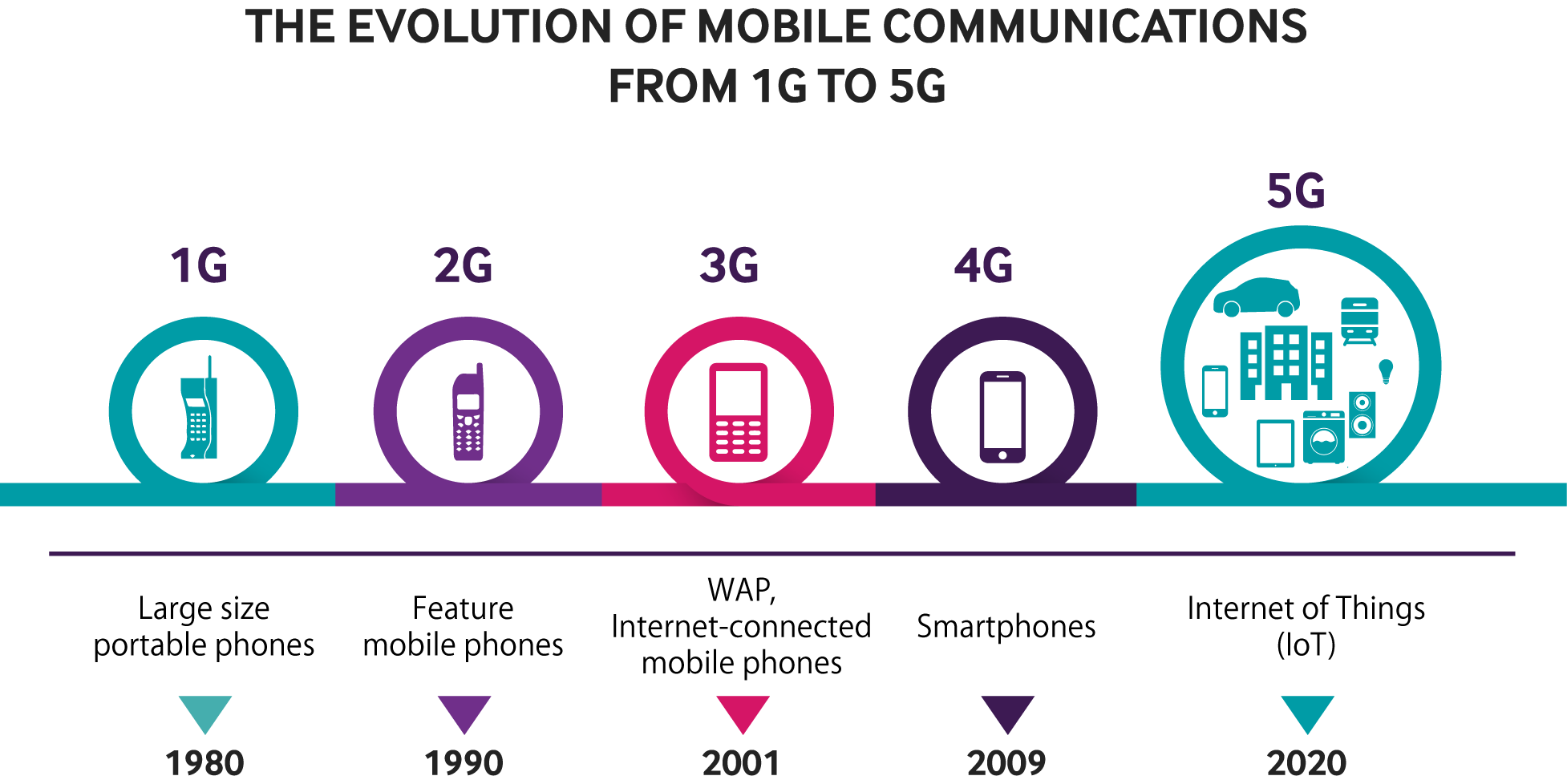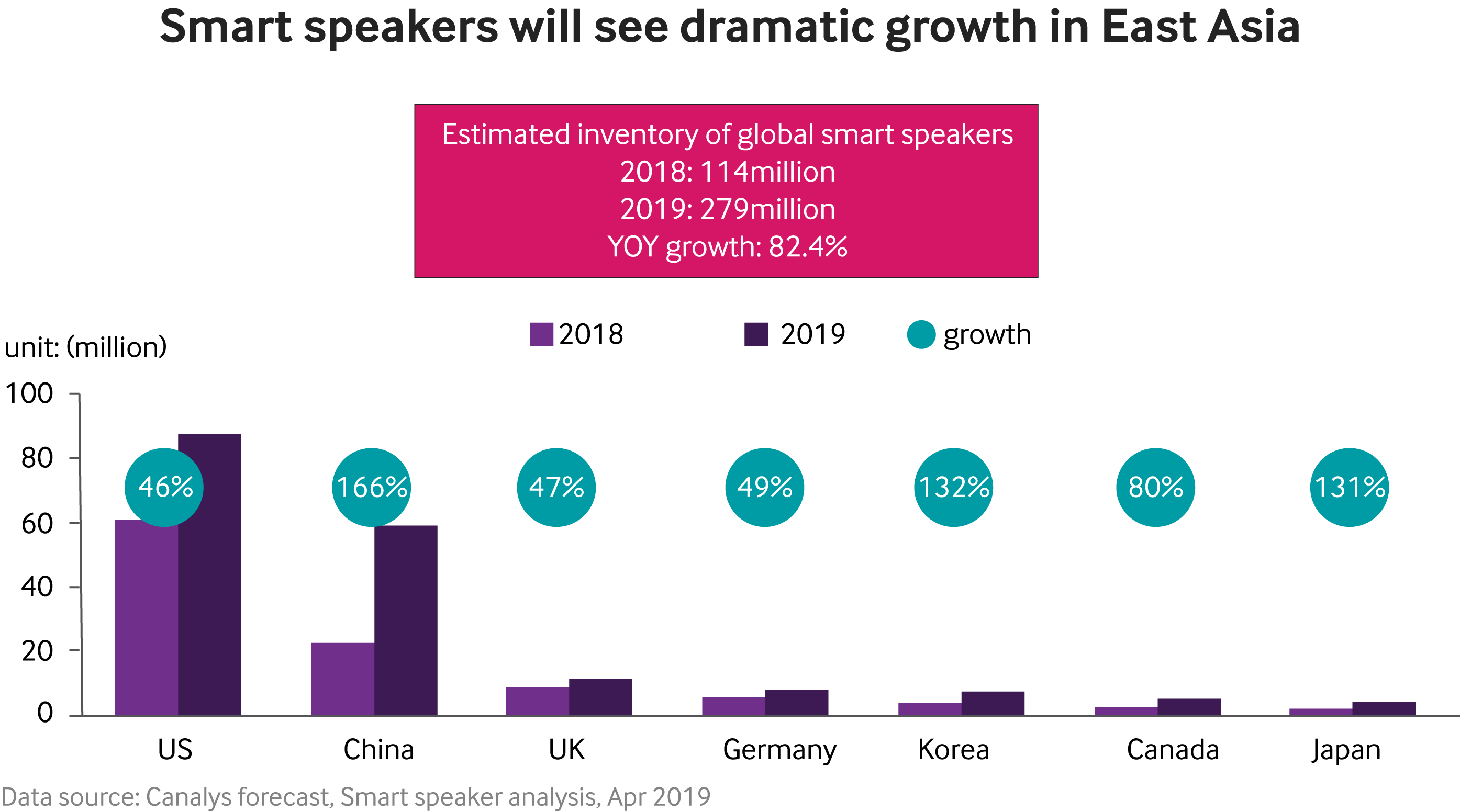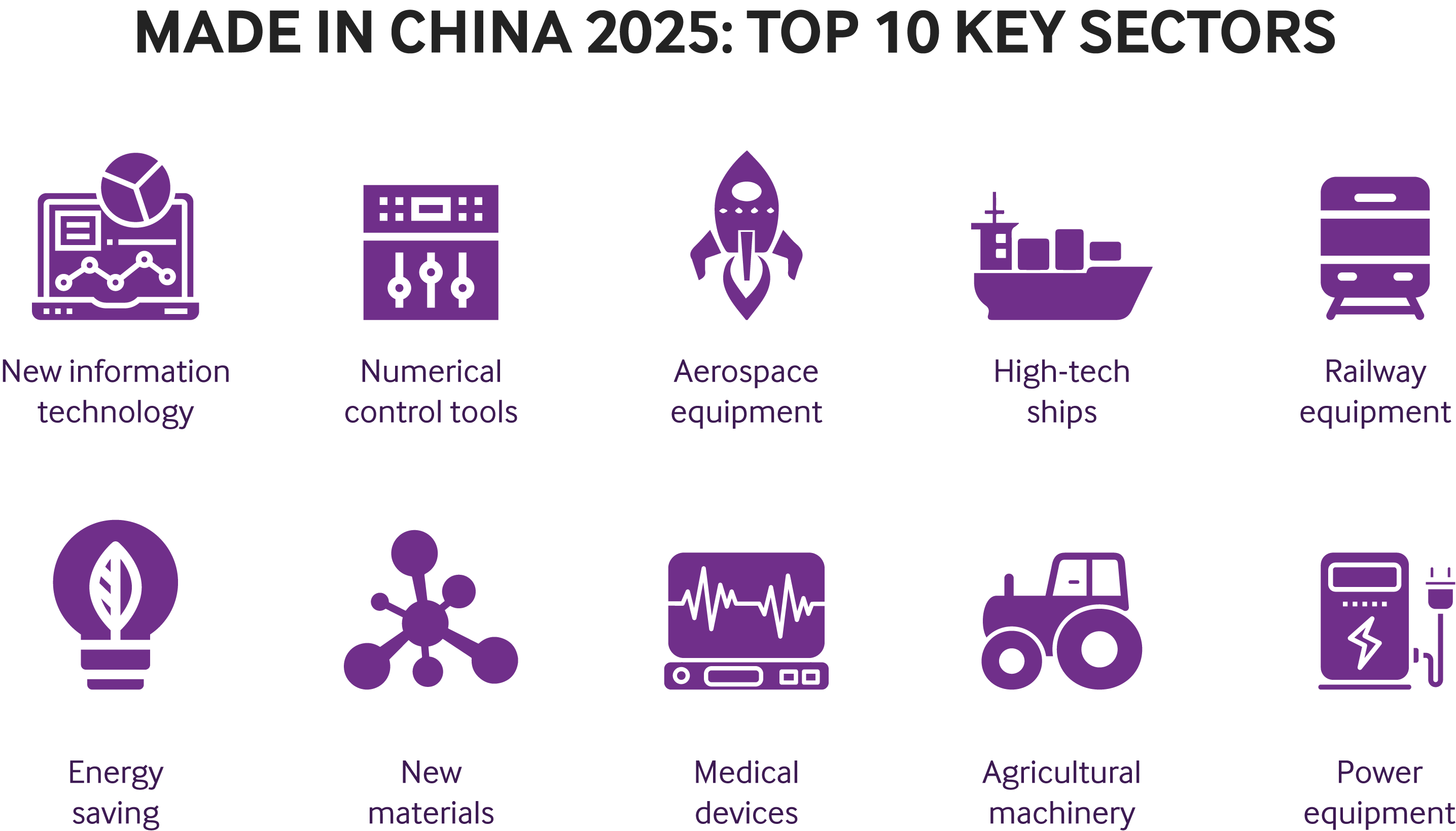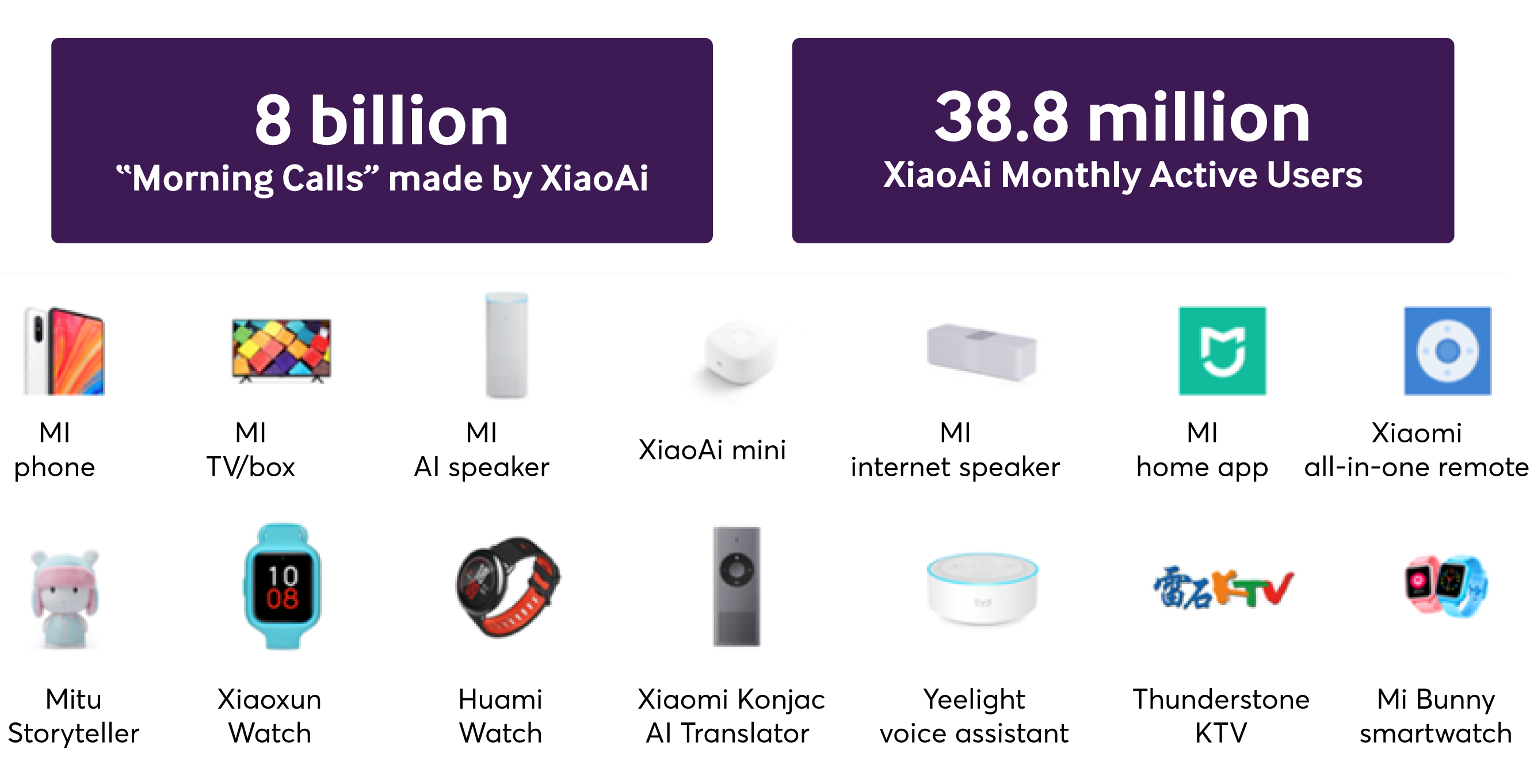The number of China’s consumers utilizing voice-led devices has been surging, with the sales of voice assistants and smart speakers reaching a new high. With the introduction of 5G network in 2020, voice-led technology is likely to continue its explosive growth and adoption.
How are China’s consumers utilizing voice-led technology? Which sectors are likely to be most impacted by it? What are the implications of voice-led technology growth for brands?
Get answers to these questions and learn even more on the topic by reading PHD China’s latest whitepaper by our Director of Partnerships Denise Ng. You can also download the full attachment here.
5G Technology: a new digital reality
In the past decade, the biggest change in communication has been the growth of smartphones and the speed of connectivity that connects people to information at their fingertips. New industries have been born while old businesses and their products have been disrupted, from Blockbuster to Netflix, to the likes of co-sharing cars to offices with Uber or WeWork.
We will soon be facing another disruption, one even faster and quicker than before, with the birth of 5G technology. 5G networks will be the next generation of mobile internet connectivity, allowing devices beyond the smartphone, including smart electronics, cars, and machines, to communicate at faster speeds with more reliable connections; it will empower the growth of IoT (Internet of Things) to operate within an infrastructure that carries and collects even more data, at an unimaginable speed.
5G technology will be 20x faster than 4G, with the peak download speed of 20 Gbps, compared to 4G at 1Gbps. It is expected that globally, 5G networks will start being launched by 2020, complementing existing 3G and 4G to provide speedier connections to stay online regardless of where you are.
In the race of 5G, China leads the Asia-Pacific region in technology spending and investment and is ahead of global markets with a forecasted investment of US$256 billion in 2019 and US$273 billion by 2020. China has outspent the US by US$24 billion in 5G investments since 2015, with China Mobile, China Unicom and China Telecom unveiling plans to launch commercial 5G networks by 2020.
Local Chinese media have reported that city governments are already encouraging the commercial adoption of 5G networks, with Chengdu being an early adopter. Chengdu’s Shuangliu International Airport is leveraging the 5G network to expedite passenger check-in, luggage delivery, and facial recognition surveillance systems are in place for security purposes. It has also opened the first 5G-enabled subway station that provides ultra-fast Wi-Fi connection.
In Shanghai, China Telecom announced it is testing its 5G network in various parts of the city to benefit specific industries and communities, including a cloud-based intelligent manufacturing system at the Shanghai Lingang Industrial Park, a healthcare 5G solution at the Yueyang Hospital, and 5G network solutions for the Shanghai Stock Exchange in Lujiazui.
With any breakthrough in technology, disruption will happen, and change is inevitable. As machines and products start “talking” to each other, the communication between humans and machines will also adapt and there will consequently be new ways we consume media. Providing consumers with information could potentially shift from TV screens and mobile screens to no screens at all.
From mobile screen to no screens
Communication has slowly shifted from person to person, to person to machine, even under existing 4G connectivity. With voice assistants like iPhone’s Siri, Amazon Echo, Google Now, Tmall Genie or Xiaomi’s XiaoAi, each of these assistant’s have their own unique capabilities. Messages on iPhone can be typed out automatically as we speak, Tmall’s Genie can instantly update us on weather changes, XiaoAi can turn on and off other connected smart home electronics. China Mobile has put in place an automated customer service hotline, replacing traditional customer service representatives. Callers simply mention specific keywords like “check monthly bill” or “what is my current data usage”, and China Mobile’s AI voice bot responds immediately on the call and/or the information is sent through an SMS. The way information can be delivered has been disrupted by technology to become automated and digitalized.
In 2018, worldwide smart speaker sales reached 114 million devices, with an expected global growth of 82% in 2019, reaching a forecasted 207 million devices. The US is currently the top market with sales of 60 million devices in 2018 and an estimated growth of 46% in 2019 to 88 million. China was the second-largest market in 2018, with over 22.5 million smart speakers sold and is expected to grow at 166%, almost tripling to 60 million devices by the end of 2019. Other markets following China with smart speaker adoption include the UK, Germany, Korea, and Canada. Chinese companies Alibaba, Baidu, and Xiaomi trail only behind Amazon and Google in smart speaker shipments.
In the US, 93% of adults surveyed claim to own a voice-enabled device and have used its voice assistance function, while 65% have used their mobile devices and its voice assistant feature.
In China, local consumers’ acceptance and ownership of different categories of smart home electronics is well above the global average, where they are two or three times more likely to buy a smart home monitor, speaker, lighting, lock, or temperature cooling system enabled with voice-activated commands. Chinese shoppers are highly open to smarter homes, and in recent years, the country has seen rapid growth in AI-powered mobile apps. Every smartphone provides enormous amounts of training data for
machine learning, making China a superpower not only in technology but also in data. However, the acceptance and ownership of smart products, whether speakers or other household electronics, has not translated into widely adopted daily usage behavior, and these products require time to prove their value.
Nonetheless, the reality is evident: voice-enabled devices merge both digital and physical realities, which makes room for truly contextual interactions with users. But with voice technology so young, it is unclear how, where and when this will become the next force of disruption.
Opportunities to watch: what does this say for the future of marketing in China?
The initiative “Made in China 2025” is the Chinese government’s flagship plan to transition from a labour-intensive manufacturing economy to a high-tech, service and consumption-focused economy, leveraging AI as a core technology for transition. Since its launch in 2016, China’s smart voice technology, speech recognition and generation in particular have seen remarkable investments.
Alibaba’s AI LAB announced in March 2019 that it was investing RMB 100 million in research and development projects around Chinese dialects, creating a Chinese dialect database through dialogue-based sample collection. Alibaba’s Tmall Genie, the company’s smart speaker, will learn to recognize various commonly used dialects, with the partnership of government institutions, universities and linguistic experts. As of January 2019, over 10 million Tmall Genie smart speakers have been sold, most widely used by Chinese consumers to seek information (news, podcasts, information), assist in everyday productivity (weather check, alarm
setting) and to have their questions answered (“how to…”, “what is…”). The latest addition is Tmall’s ‘Genie Queen’, an 8-inch smart mirror for make-up application that auto-adjusts the mirror’s lighting to create dimly lit or natural sunlight conditions and responds to voice commands just like the Tmall Genie. At one’s voice command, skincare and beauty products can be purchased on Tmall through the mirror. Alibaba worked with 16 beauty brands, including La Roche-Posay, Kérastase, Sisley and Johnson & Johnson, to incorporate beauty tips and branded content, with skincare assessments, UV-exposure forecasts and beauty-routine reminders.
As voice-led requests become increasingly common, it is worth noting that Xiaomi is paving the path to building an AI-led IoT ecosystem. Xiaomi has developed smart products across 23 household electronics categories, including smart lighting, air conditioning, TV, vacuum cleaning, water purifying, rice cooking, and camera recording products. At the core of all these products is Xiaomi’s voice-activated assistant, XiaoAi. XiaoAi is embedded in over 200 household products and was built as a connector
between humans and Xiaomi products. It is “trained” to respond to over 200 voice commands and its skills are constantly upgraded and improved. Over 38 million monthly active users are accessing XiaoAi, with a daily average of 5 voice interactions. Different from Tmall Genie’s usage preference, XiaoAi is frequently utilized by users to casually chat, control various smart products and search for information.
Brands such as travel booking site Qunar and Yili’s infant milk formula brand Jin Ling Guan have leveraged XiaoAi’s voice to assist their marketing communications. During Chinese New Year 2019, XiaoAi became a travel assistant by providing real-time ticket queries and bookings, helping Qunar book additional 500,000 trips. XiaoAi also helped over one million new mothers and fathers by offering over 50 million practical tips for raising their newborn baby.
Moving beyond voice-activated marketing, audio-led marketing has also been gradually and increasingly embedded into Chinese consumers’ daily lives. A 2009 report from Sweden’s Lund University provides insights into how sound and sound environments can affect humans on a personal, emotional and psychological level, making sound a powerful tool that can help trigger and process specific memories or emotions. VISA found that
sound could make consumers feel safe and secure in their transactions, and the brand released a special sound of chimes to signify a secure and speedy transaction when shoppers used VISA in-store or online during the Christmas period. From this campaign, 83% of shoppers responded that hearing VISA’s new “audio signature” sparked a positive perception of the brand.
China’s leading audio podcast app, Ximalaya FM, has over 480 million registered users, with 109 million monthly active users and an average daily time spent of 2 hours and 15 minutes. Focused on delivering high-quality audio content, like audiobooks, talk shows and vertical-specific audio channels (kid’s storybooks, cooking, or “Chicken Soup”) it has expanded its reach beyond smartphones and into the living rooms and cars of Chinese consumers. Through partnership with multiple auto manufacturers and smart car OS providers, Ximalaya’s pre-installed app reaches 280 million Chinese car owners. It has also developed its own smart-speaker, Xiaoya. Both Ximalaya FM app and Xiaoya smart speakers provide an audio library of over 200 million audio content pieces into Chinese homes, phones and cars.
Beyond regular ad displays or native feed advertising formats, brands have partnered with Ximalaya to deliver audio ads (imagine a radio jingle or a broadcaster’s sponsored message). These ads use ASMR (autonomous sensory meridian response), an experience that leverages a sound/series of sounds to send a calming sensation to the person who hears it, sponsored branded audio channels, and premium audio content available only to paying VIP members. Ximalaya expects that the future of marketing to go beyond eyeballs and through the ears of consumers.
Implications for brands: what’s next?
The ways in which brands can reach their consumers has changed – it is more fragmented, with multiple routes to take. But that should not change a brand’s marketing objective. Before jumping on the latest bandwagon, it is essential for brands to remember their priorities and the goal of their marketing activity.
A few considerations before adopting voice-led or audio-space marketing:
1) What is one key contextual moment, your brand can play in and own? In the past, search platforms helped brands deliver relevant content as users were seeking an answer. It could be a cooking or cleaning moment, and in those moments, your brand or product becomes the solution. As voice-led search behavior increases, what can your brand or product do for the user at this moment that matters?
2) Not all assets are created equal—and this is especially true for
voice-led or audio marketing environments. Brands must be able to “let go” of their regular ways of working in order to create an ad message and format that is distinctively applicable to the new, voice-led media environment.
3) Test and learn with reliable partners; you know your brand and product best, but they know their platform and users better. There may be various stakeholders and teams involved beyond marketing and sales, and every team will have a different perspective on its delivery and success. Work in a collaborative partnership and allow room for all parties to breathe and grow, test and learn.
__________________________________________________________________________
Sources
5G will disrupt connectivity and communication
- https://www.techradar.com/news/what-is-5g-everything-you-need-to-know
- https://www.lifewire.com/5g-vs-4g-4156322
- https://www.zdnet.com/google-amp/article/china-
to-lead-apac-tech-spend-5g-race-ahead-of-global-markets/ - http://epaper.scdaily.cn/shtml/scrb/20190313/212689.shtml
- http://news.cnstock.com/news,bwkx-201903-4354914.htm
- https://technode.com/2019/02/25/briefing-xiaomi-unveils-
first-5g-smartphone-looks-towards-africa/
Voice marketing overview
- https://venturebeat.com/2019/02/09/voice-marketing-is-a-looming-opportunity-but-not-without-its-pitfalls/
- https://www2.deloitte.com/cn/en/pages/technology-media-
and-telecommunications/articles/2018-deloitte-china-mobile-consumer-s
urvey.html - https://www.abacusnews.com/digital-life/chinese-people-
are-buying-more-smart-speakers-they-arent-using-them/article/3002512 - https://www.canalys.com/newsroom/amazon-reclaims-
top-spot-in-smart-speaker-market-in-q3-2018 - http://www.sixthtone.com/news/1003718/How%20AI-Powered%20Voice%20Bots%20Flooded%20China%E2%80%99s%20Telemarketing%20Industry/
- https://www.adweek.com/brand-marketing/as-voice-continues-
its-rise-marketers-are-turning-to-sonic-branding/ - http://lmc.lu.se/docs/rapport8_sound_mind.pdf
Immediate media opportunities, additional information provided by Xiaomi, Ximalaya
Tmall Genie
- https://mp.weixin.qq.com/s/PpD7uzFcBwsFR3Yu2bDZ-A
Alibaba investments
- https://technode.com/2019/03/21/alibabas-
ai-labs-smart-speaker/ - https://medium.com/@emalinaker/listen-up-why-audio-branding-is-a-sound-strategy-in-2019-5c52588a3302






